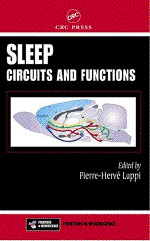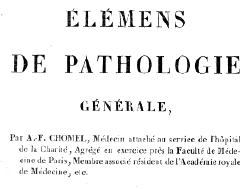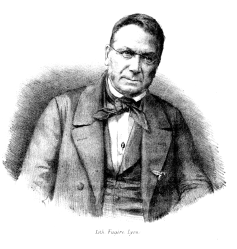La présence éventuelle d'une publicité ci-dessus est insérée par le routeur du mailing-liste indépendamment de mes choix en compensation de la gratuité de son service Dr O Walusinski baillement.com baillement.info yawning.info 

mardi 1er février 2005 la lettre d'information du site baillement.com N°36 Si vous ne voyez pas les images, cliquez ici pour lire cette lettre dans votre navigateur. If you cannot see pictures below, to view the email in your web browser click here baillement.com est libre d'accès, base documentaire pour comprendre, chercher, travailler
The superstitions concerning yawning- There are two basic ideas about the dangers related to the yawn. In yawning, either the soul escapes and flees the body through the gaping mouth or the devil enters the body through the same aperture. Both dangers are grave and should be averted !
On entre, on crie, et c'est la vie! On bâille, on sort, et c'est la mort! Ausone de Chancel 1808-1876 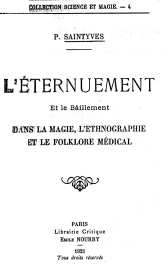
Bâillements et superstitions - Deux idées dominent parmi les superstitions concernant les dangers du bâillement. Soit l'âme sort et s'envole par la bouche largement ouverte, soit des esprits démoniaques entrent par la même ouverture !
- Les esprits (les bâillements) sont comme les parachutes, ils ne fonctionnent que lorsqu'ils sont ouverts. Pierre Desproges.

- Hadith - Bukhari Narrated Abu Huraira : The Prophet said, "Yawning is from Satan and if anyone of you yawns, he should check his yawning as much as possible, for if anyone of you (during the act of yawning) should say: 'Ha', Satan will laugh at him."
- Hadith - Bukhari Narrated Abu Huraira : The Prophet said, "Allah likes sneezing and dislikes yawning, so if someone sneezes and then praises Allah, then it is obligatory on every Muslim who heard him, to say: May Allah be merciful to you (Yar-hamuka-l-lah). But as regards yawning, it is from Satan, so one must try one's best to stop it, if one says 'Ha' when yawning, Satan will laugh at him."
- Hadith - Muslim, Narrated AbuSa'id al-Khudri : Allah's Apostle said: When one of you yawns, he should try to restrain it with the help of his hand since it is the Satan that enters therein.
- Hadith - Mishkat, Narrated AbuHurayrah , transmitted by Tirmidhi and Ibn Majah : Allah's Messenger said, Yawning in prayer is an act of Shaytan, so when one of you yawns he should restrain it as much as possible. In another version it the word are: He should place his hand upon his mouth.
- Hadith - Mishkat, Narrated by Grandfather of Adi
ibn Thabit, Transmitted by Tirmidhi : Allah's
Messenger said: Sneezing, drowsing, yawning in prayer,
also menstruation, vomiting and nose-bleeding are from
(the acts of) Shaytaan (Satan).
- XXII Bâillement : L'Hindou doit, quand il bâille, faire claquer son pouce sur ses doigts et prononcer le nom de quelque dieu, de Rama, par exemple; négliger de le faire c'est un péché aussi grave que le meurtre d'un brahmane.
- XXIV Dans l'Inde septentrionale de nos jours : Comme on peut s'y attendre, les Bhûts (esprits) aiment beaucoup à entrer par la bouche. C'est la raison de tous les rincements de bouche qui font partie du rituel journalier des Hindous et de la plupart des précautions compliquées qu'ils prennent lors de leurs repas.
- XXV Danger du bâillement : Il est mauvais de bâiller, car deux espèces de dangers sont à redouter : ou bien les Bhûts peuvent descendre dans votre gorge, ou bien une partie de votre âme peut s'échapper et ce sera très difficile de la rattrapper. Aussi, s'il vous arrive de bâiller, il faut mettre votre main devant votre bouche et dire ensuite : Mârâyan! «Grand Dieu!» ; ou il faut faire craquer vos doigts, ce qui effraiera le mauvais esprit.
Bilateral chylothorax :a case report following episodes of stretching Kathryn M. Reilly & Edward Tsou JAMA 1975; 233; 6; 536-537
Bilateral chylothorax :a case report following episodes of stretching - Chylothoraxis a relatively rare condition characterized by pleural fluid that has a high concentration of neutral fat and fatty acid but little cholesterol. Bilateral chylothorax is even more unusual. Trauma and tumor are responsible for the majority of the 51 cases of bilateral chylothorax that Reilly and Tsou were able to find in a search of the literature.
- Bilateral chylothorax was discovered in the patient after a second episode of bilateral pleural effusion following stretching. Rilly and Tsou postulate that sudden hyperextension of the spine during yawning resulted in injury to a fixed or inherently weak thoracic duct with leakage of chyle into both pleural cavities, followed by healing of the duct and resorption of the chylous effusions.
- Les cas de chylothorax sont rares. Ce type d'épanchement pleural est caractérisé par l'issue de lymphe, riche en lipides et en acide gras entre les deux feuillets de la plèvre par lésion communicante du canal thoracique. Les chylothorax bilatéraux sont encore plus exceptionnels. Les cancers et les traumatimes accidentels ou chirurgicaux sont les causes habituellement retrouvées comme le montrent les 51 cas recensés dans la littérature par E. Tsou en 1975.
- E. Tsou présente ici un cas de récidive de chylothorax bilatéral survenu au décours d'un étirement généralisé ou pandiculation !
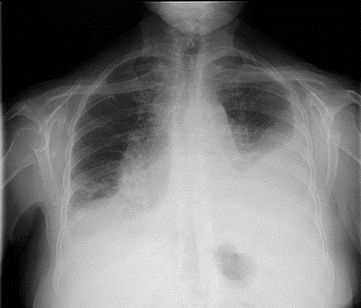
-
Reno T. on October 30, 2002 - Ou comment le traitement de la maladie des apnées du sommeil permet le retour d'un sommeil normalement structuré et la réapparition des bâillements.
- L'apnée obstructive du sommeil engendre une perte du sommeil paradoxal. La répparition de celui-ci semble contemporaine de la réapparition des bâillements.
- Un élément clinique supplémentaire est ainsi apporté pour un lien entre sommeil paradoxal et bâillements.
- Sleep apnea syndromes may be associated with suppression of REM sleep. Successful treatment with CPAP seems to allows the reappearance of yawning. A clinical complement to the link between yawning and REM sleep.
-
CPAP and Yawning : Forever YawningBasic fact, yawning is an indication that you are tired.
So, why yawning now? Because of the constant awakenings as a result of sleep apnea, we become tired, then fatigued, then more fatigued, then a zombie ..... It seems somewhere along the line some of us at least go beyond the normal reaction to lack of sleep and fail to exhibit the normal reactions. One of the many things I quit experiencing with sleep apnea was an occasional yawn.
When we start NPAP therapy, we first catch up on severly delenquent REM sleep (experiencing what is called REM rebound). We then get back into a normal sleep mode with normal sleep architecture and normal circadian rhythums. If we get more than the normal for adults 8+ hours per day of sleep, we begin to pay back our sleep debts.
During this period of time we start to experience minor little changes in our lives. Simple things like not falling asleep behind the wheel. Seeing the end of movies. Making it through the kids (or grand kids) school program. Or yawning. My co-workers thought I was nuts! It's not a disbuted issue, but "yawning"! I began yawing one afternoon at work. Several times. And then I realized, I hadn't yawned in years! In fact I couldn't remember when I had last yawned. A lot of years!!!
And suddenly it dawned on me that the yawning was a very simple, very subtle sign that I was getting better. I ran around telling everyone "Hey!, I'm yawning!!!" Yes, a nut, but I was getting better!!!
Now, a note of caution. I went through a period of time when I yawned, but as I continued to pay back my sleep debt, I quit yawning again. After that, if I pushed things, and got tired, I would yawn. If I maintained proper sleep hygiene, I don't yawn.
So, let yawning be a sign. If you are still yawning after a year like "Rested", it may be that you aren't getting enough sleep to pay back your sleep debt. Or perhaps that there is another problem. If you occasionally yawn, get some extra sleep for a night or two. Be aware of your body, and your sleep it is important.
-
Sleep circuits and functions - edited by Pierre-Hervé Luppi
- Frontiers in Neuroscience
- CRC Press 2005
- Preface by Pierre-Hervé Luppi
- Sleep is operationally defined as a specific behavior during which the organism adopts a recognizable posture (usually characterized by the relaxation of the antigravity musculature), the responsiveness to external stimuli is decreased, and which is regulated by a homeostatic process whereby the deprivation of sleep subsequently leads to a sleep rebound. Although the homeostatic process maintains the duration and intensity of sleep within certain boundaries, the circadian rhythm determines its timing. Sleep is not a unitary process. It is composed of at least two substrates, each named after its main distinctive features. One is characterized by the presence of low-amplitude, relatively fast rhythms on electroencephalographic (EEG) recordings and rapid eye movements (REMs), despite global muscular tonus abolition, and is therefore often referred to as REM sleep or paradoxical sleep (PS). The other main sleep type is known as non-REM (NREM) or slow-wave sleep (SWS). It is characterized by large-amplitude, low-frequency EEG oscillations. During the night, SWS and REM sleep periods alternate, following an ultradian rhythm of about 90 to 100 min.
- In order to treat the pathologies of sleep, basic and clinical researchers have seen tremendous advances in the last 40 years. Today new biomedical technologies are advancing our understanding of disease, functions, and regulation of SWS and REM sleep, but much remains to be done to meet the many needs and opportunities of this field. Recent years have seen major discoveries in the circuits responsible for SWS and REM sleep, narcolepsy, and the possible role of sleep in memory and developmental processes.
- The aim of this book is to present these and other recent major advances in sleep research obtained by means of emerging new technologies and approaches. In particular, new data obtained by differential gene expression analysis, transgenic mice, and functional imaging are presented. New theoretical concepts about the mechanisms regulating sleep and new theories on its functions are also discussed.
- Sleep circuits and functions
- sous la direction de Pierre-Hervé Luppi
- Frontiers in Neuroscience
- CRC Press 2005
- Préface de Pierre-Hervé Luppi
- Le sommeil est défini comme un comportement caractéristique pendant lequel l'organisme adopte une posture particulière reconnaissable (caractérisée par la relaxation des muscles anti-gravitaires), une réduction des capacités de perception des stimuli extérieurs. Il est régulé par un processus homéostasique comme le montre le rebond de sommeil succédant à une privation. Alors que le processus homéostasique régule la durée et la profondeur du sommeil, le rythme circadien en module ses horaires. Le sommeil n'est pas un processus uniciste. Il est composé d'au moins deux stades, dénommés par leurs caractéristiques principales. L'un est caractérisé par la présence d'ondes électroencéphalographiques de faible amplitude à un rythme rapide, des mouvements occulaires rapides, une hypotonie musculaire globale, c'est le REM sleep ou sommeil paradoxal. L'autre connu comme non-REM sleep ou sommeil profond (lent) est caractérisé par des ondes électroencéphalographiques amples et de fréquences lentes. Au cours de la nuit, ces deux types de sommeil alternent suivant un rythme ultradien d'environ 90 à 100 minutes.
- Pendant les 40 dernières années, cliniciens et chercheurs ont engrangé des résultats importants afin d'être à même de traiter les pathologies du sommeil. De nouvelles technologies biomédicales permettent d'approfondir nos connaissances des maladies, fonctions, et régulations des différents types de sommeil, mais beaucoup reste encore à faire. Ces dernières années ont vu émerger les découvertes majeures des circuits responsables du sommeil profond et du sommeil paradoxal, de la narcolepsie, du possible rôle du sommeil sur les processus mnésiques et développementaux.
- Le but de cet ouvrage est de présenter ces découvertes et d'autres avancées importantes de la recherche somnologique obtenues grâce à de nouvelles technologies et de nouveaux concepts. En particulier, les nouvelles données recueillies par l'analyse de l'expression de différents gênes, par l'étude de modèles animaux (souris transgènques), par l'imagerie fonctionnelle y sont présentées. De nouveaux concepts théoriques y sont analysés et de nouvelles théories sur les fonctions du sommeil y sont discutées.
Parution des textes des communicationsentendues au cours de ce mémorable colloque dans la revue de Neuroscioences Archives Italiennes de Biologie july 2004 ; 142; 4 ; 588 pages 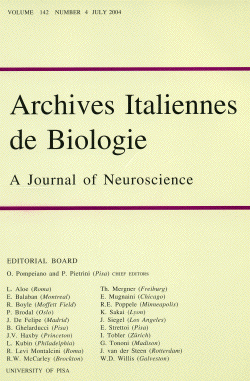
Colloque International en l'honneur de Michel JouvetThe paradox of sleep: an unfinished story Un congrès international en l'honneur de Michel Jouvet. 3,4 Septembre 2003 How sleep was dissociated into two states: telencephalic and rhombencephalic sleep? Jouvet M Arch Ital Biol 142(4) 317-26 (2004) The duality of sleep revealed: the history of paradoxical sleep Naquet R Arch Ital Biol 142(4) 327-32 (2004) The paradox of sleep: the early years Dement WC Arch Ital Biol 142(4) 333-45 (2004) Slow-wave sleep: serotonin, neuronal plasticity, and seizures Steriade M Arch Ital Biol 142(4) 359-67 (2004) Contribution of the "knock-out" technology to understanding the role of serotonin in sleep regulations Adrien J, Alexandre C, Boutrel B, Popa D Arch Ital Biol 142(4) 369-77 (2004) Paradoxical REM sleep promoting and permitting neuronal networks Jones BE Arch Ital Biol 142(4) 379-96 (2004) Brainstem structures responsible for paradoxical sleep onset and maintenance Luppi PH, Gervasoni D, Boissard R, Verret L, Goutagny R, Peyron C, Salvert D, Leger L, Barbagli B, Fort P Arch Ital Biol 142(4) 397-411 (2004) Regional organisation of brain activity during paradoxical sleep (PS) Maquet P, Ruby P, Schwartz S, Laureys S, Albouy G, Dang-Vu T, Desseilles M, Boly M, Melchior G, Peigneux P Arch Ital Biol 142(4) 413-9 (2004) Role of the locus coeruleus in the control of paradoxical sleep generation in the cat Sakai K, Crochet S Arch Ital Biol 142(4) 421-7 (2004) Mechanisms and models of REM sleep control McCarley RW Arch Ital Biol 142(4) 429-67 (2004) Rem sleep without atonia from cats to humans Mahowald MW, Schenck CH Arch Ital Biol 142(4) 469-78 (2004) Narcolepsy research: past, present, and future perspectives Fromherz S, Mignot E Arch Ital Biol 142(4) 479-86 (2004) Sleep-promoting functions of the hypothalamic median preoptic nucleus: inhibition of arousal systems McGinty D, Gong H, Suntsova N, Alam MN, Methippara M, Guzman-Marin R, Szymusiak R Arch Ital Biol 142(4) 501-9 (2004) The dynamics of spindles and EEG slow-wave activity in NREM sleep in mice Vyazovskiy VV, Achermann P, Borbély AA, Tobler I Arch Ital Biol 142(4) 511-23 (2004) The dream between neuroscience and psychoanalysis Mancia M Arch Ital Biol 142(4) 525-31 (2004) Genes for prostaglandin d synthase and receptor as well as adenosine A2A receptor are involved in the homeostatic regulation of nrem sleep Hayaishi O, Urade Y, Eguchi N, Huang ZL Arch Ital Biol 142(4) 533-9 (2004) Uncoupling proteins and sleep deprivation Cirelli C, Tononi G Arch Ital Biol 142(4) 541-9 (2004) Cortical and pontine variations occurring in the voltammetric no signal throughout the sleep-wake cycle in the rat Cespuglio R, Debilly G, Burlet S Arch Ital Biol 142(4) 551-6 (2004) Relationship between sleep and eye state in Cetaceans and Pinnipeds Lyamin OI, Mukhametov LM, Siegel JM Arch Ital Biol 142(4) 557-68 (2004) L'ontogenèse et la phylogenèse confirment la dialité des états de sommeil Valatx JL Arch Ital Biol 142(4) 569-80 (2004)
 Anna
Vaugn Hyatt Huntington
Anna
Vaugn Hyatt Huntington1876 - 1973 Yawning panther Bronze (5 * 14 cm)

Le rat et l'huitre Jean de La Fontaine (1621-1695) Fable 9 ; Livre VIII
Le rat et l'huitre
- Parmi tant d'Huîtres toutes closes,
- Une s'était ouverte, et bâillant au Soleil,
- Par un doux Zéphir réjouie,
- Humait l'air, respirait, était épanouie,
- Blanche, grasse, et d'un goût, à la voir, nonpareil.
- D'aussi loin que le Rat voir cette Huître qui bâille :
- «Qu'aperçois-je ? dit-il, c'est quelque victuaille ;
- Et, si je ne me trompe à la couleur du mets,
- Je dois faire aujourd'hui bonne chère, ou jamais».
-
Edgar Degas 1874 - Répétition d'un ballet sur la scène
- Metropolitan Museum, New York
Elemens de pathologie généraleAuguste François Chomel (13 avril 1788 - 9 avril 1858) chez Crochard Libraire Paris 1824 - Auguste François Chomel (Paris 13 avril 1788 - 9 avril 1858 Morsang / Orge ) fut un clinicien réputé de son temps. Agrégé en 1823, il sera un fervent partisan de l'auscultation après la découverte de Laënnec et lui succèdera à l'Académie de médecine. En 1828 il décrivit la névrite périphérique.
- Dans le bâillement (oscitatio) il y a tout à coup une inspiration plus grande, plus lente et plus bruyante que les autres, avec écartement des mâchoires, et souvent avec flexion prompte, puis extension lente et graduée des membres et particulièrement des membres pectoraux. Ce dernier mouvement, qu'on nomme pandiculation (pandiculatio), a lieu quelquefois sans le bâillement, qu'il accompagne presque toujours. Ces deux symptômes surviennent fréquemment au début des accès de fièvre intermittente et au déclin des attaques d'hystérie.
s
-
Autres documents mis en ligne ce mois-ci :
- Traité des nerfs et de leurs maladies Samuel Tissot 1780
- De la santé des gens de lettres S Tissot 1769
- Yawning in the Greenfinch JO Harrison
- Traité des maladies des nerfs G. Cheyne 1733
- Traité des maladies les plus fréquentes et des remèdes propres à les guérir JA Helvetius 1734
- De l'impaludisme Duboue 1867
- De oscitatione Justus Godofredus Gunzius 1738
- Les vapeurs et maladies nerveuses hypocondriaques ou hystériques R Whytt 1777
- La fatigue A Mosso 1896
- La dyspnée des neurasthéniques G. André 1900
- Bon conseil aux amants Victor Hugo
- Sleep as a problem of localisation von Economo 1930 - pdf
- Sommeil paradoxal et bâillements O. Walusinski
- Nicotine blocks quinpirole-induced behavior in rats: psychiatric implications Y Tizab
Résultats du sondageau 31 janvier 2005 Recherche par mot du site
-
Nombre de questionnaires remplis : 1467 - Combien de fois bâillez-vous par jour ? <5 = 25,7%.. 5-10 = 25,7%.. 10-15 = 15.3%.. 15-20 = 8,6%.. >20 = 24,7%
- Ressentez-vous des baillements excessifs ?
- 70,3% = non, tant mieux
- 26,9% = oui et je ne sais pas pouquoi
- 7,6% = oui et je prends des antidépresseurs
- 1,2% = oui et je prends des anti-épileptiques
- 4,5% = oui et je prends d'autres médicaments
- 2,7% = oui et j 'ai des troubles neurologiques
- 2,5% = oui et j 'ai des troubles hormonaux
- 3% = oui et j 'ai des tics moteurs
- 2% = oui et j 'ai des tocs
- déclenchez-vous facilement le bâillement d'autrui ? 75,1%
- êtes-vous sensible au bâillement d'autrui ? 74,1%
- Qui oserait méconnaître l'utilité de l'anatomie, lorsque la physiologie n'en est que le développement ou la fin? Qui pourrait en, effet, étudier les fonctions des organes et la manière dont ils les exécutent s'il ne connaissait pas ces organes?
- L'étude de l'anatomie est la base indispensable de la physiologie. Sans elle, sans la connaissance des organes, nous ne pourrions connaître aucune fonction. Cependant, ce serait une erreur de croire que la simple inspection de forme et de structure suffise pour nous révéler une fonction.
- On a vainement déroulé les plis du cerveau, ils sont restés muets à cette investigation; ils n'ont révélé aucune trace des actes sublimes qui s'y opèrent pendant la vie. Mais ce n'est pas une raison pour nier les services que l'anatomie a rendu à la physiologie : car si elle n'a découvert aucune fonction, on n'a pu découvrir aucune fonction sans elle.
baillement.com baillement.info yawning.info écrits et réalisés par le Dr Walusinski
Voici le nombre d'abonnés à cette lettre : courriel à adresser lire les lettres précédentes d'information du site
